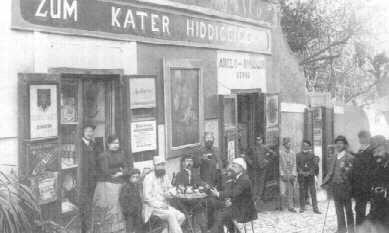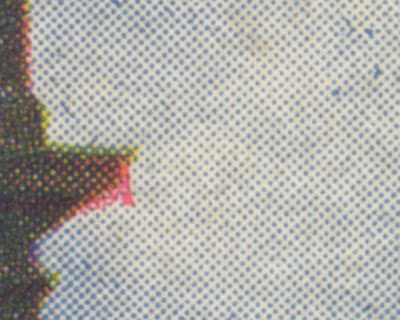Friday 31 December 2010
Tuesday 28 December 2010
Friday 24 December 2010
Tuesday 21 December 2010
LE COMBAT À LA BARRIÈRE

Jacques Callot (1592 - 1635) The Combat at the Barrier. 1627.
… Karl Freund, who [Godard tells us] invented in advance the lighting effects of Nuremberg… and which they themselves derived from Goya, Callot or Rembrandt and his 'terrible black and white'
Ranciere - The Future of the Image - Sentence, Image, History p54
three solitudes
Walter Benjamin: “When Fourier looked for an example of travail non salarié mais passionné, he found none that was more obvious than the building of barricades.”
Sunday 19 December 2010
the thin fluorescent line/ kettled at the palace 30.11.10


Labour of Dyonisus: Weak subjects and the politics of avoidance.
In the development of the postmodern liberal argument State power is not exerted according to what Foucault calls a disciplinary paradigm […]. State power here does not involve the exposure and subjugation of social subjects as part of an effort to engage, mediate, and organise conflictual forces within the limits of order. The thin state avoids such engagement: this is what characterises its “liberal” politics. […]
The liberal notion of tolerance coincides here perfectly with the decidedly illiberal mechanism of exclusion. The thin state of postmodern liberalism appears, in effect, as a refinement and extension of the German tradition of the science of the police. The police are necessary to afford the system abstraction and isolation: the “thin blue line” delimits the boundaries of what will be accepted as inputs in the system of rule. […]
The crucial development presented by the postmodern Polizeiwissenschaft, is that now society is not infiltrated and engaged, but separated and controlled: not a disciplinary society but a pacified society of control. The police function creates and maintains a pacified society, or the image of a pacified society, by preventing the incidence of conflicts on the machine of equilibrium. […]
The method of avoidance then carries implicitly a postmodern Polizeiwissenschaft that effectively, and in practical terms, abstracts the system from the field of potential conflicts, thus allowing the system to order an efficient, administred society.
Saturday 18 December 2010
square halos, lozenge armorials, female lines


Trace the diagonals in the rectilinear space of control: oppose diagonals to charts, interstices to grids, movements to positions, futures to identities, unending cultural multiplicities to simple natures, artifacts to pretensions of origin.
Inventing the Common
Antonio Negri and Judith Revel
Wednesday 15 December 2010
progresses, processions and magnificent festivities
Sunday 12 December 2010
Saturday 11 December 2010
Wednesday 8 December 2010
Capri/ Café Hiddigeigei

„Ich verbringe hier regelmäßig am Nachmittag einige Stunden im Café“, schrieb Benjamin im Juni 1924 an seinen Freund Gershom Scholem und stellte fest: „Mit der Zeit lerne ich in dem Scheffel-Café Hiddigeigei (an dem außer dem Namen nichts unangenehm ist) einen um den anderen kennen.“
via Inselbesucher
Tuesday 7 December 2010
Monday 6 December 2010
Saturday 4 December 2010
Friday 3 December 2010
Thursday 2 December 2010
TIKKUN / repairing the world
Lurianic Kabbalah has also been used to explain the role of prayer and ritual action in tikkun olam. According to this vision of the world, God contracted part of God's self into vessels of light to create the world. These vessels shattered and their shards became sparks of light trapped within the material of creation. Prayer, especially contemplation of various aspects of the divinity (sephirot), releases these sparks and allows them to reunite with God's essence. Wikipedia
According to Isaac Luria's Kabbalist doctrine of Tikkun, the breaking of the 'vessels' of God's attributes scattered divine sparks in fragments throughout the material world. The task of healing these broken vessels, an enterprise in which "man and God are partners", reestablishes the "harmonious condition of the world" not as a restoration, but "as something new".
Tuesday 30 November 2010
[In lieblicher Bläue . . .]
Hebrew printing on blue paper
Early in the C16 under the influence of the Italian master printer Aldus Manutius, a new 'secondary deluxe' medium [after the preferred vellum] was introduced into Venetian Hebrew printing by the Xtian publisher of Jewish texts, Daniel Bomberg of Antwerp. The new material, blue paper, a product of Renaissance fascination with the indigo dye, became a convention of Hebrew deluxe printing in the C16.
It is possible that the special status of blue in Jewish religious tradition - according to the Talmud, blue is the colour of the divine throne - led to the affinity for this colour in the Hebrew book world.
…
Cheap blue tinted paper was widely used by indigent printers in towns such as Dubno, Jozefow. Kpys, Korec, Ostrog, Wilno, Zhitomir…
Over the centuries papers of other colours, such as green, rose, grey, yellow, orange, were occasionally used for printing special copies of Hebrew books, and sometimes on large, wide margined sheets. In most cases the paper was dyed in the pulp, but in some cases it was painted after manufacture. In a very few instances a variety of coloured papers was used to print a single book. In a few other instances the text was printed in red ink on coloured paper…
In Eastern Europe in this century, posters and other ephemera, in large part Yiddish, were often printed on coloured paper stock.
Brad Sabin Hill
Hebrew Section
Oriental & India Office Collections, BL 1995
Monday 29 November 2010
WHERE WOLFE DIED

Monument to Wolfe the British General and Montcalm the French General. Who both fell mortally wounded on Sep 13th 1759 on the Plains of Abraham within a few yards of each other.
The latin inscription on the monument is thus translated “ Valor gave them a common death, history a common fame and posterity a common monument.”
Sunday 28 November 2010
PERAS
Where the cross is etsia [seutaria] the photo is being taken from Pera, European side. I am going to Seutaria on Sunday or Saturday, that side is where the Sultan is living. Yours

PERAS
| πέρας |
- of a portion of space
- boundary
- frontier
- the ends of the earth
- the remotest lands
- of a thing extending through a period of time (termination)
Saturday 27 November 2010
Friday 26 November 2010
Thursday 25 November 2010
Wednesday 24 November 2010
Tuesday 23 November 2010
observations, weather changes …
HMS Resolution
This is Alexander Copper Mines
Note the aerial railway
Monday 22 November 2010
Monday
Sunday 21 November 2010
Le Sang d'un Poete

Every poem is a coat of arms which must be deciphered. How much blood and tears in exchange for those axes, those gules, those unicorns, those torches, those towers, those martlets, those scattered stars and those fields azure!
Free to choose the faces, the forms, the gestures, the sounds, the acts and the places which he likes, he composes with them a realistic documentary of unreal events. The musician will emphasize the sounds and the silences.
The author dedicates this film allegory to the memory of Pisanello, Paulo Uccello, Piero della Francesca, Andrea del Castagno, painters of coats of arms and enigmas.




















